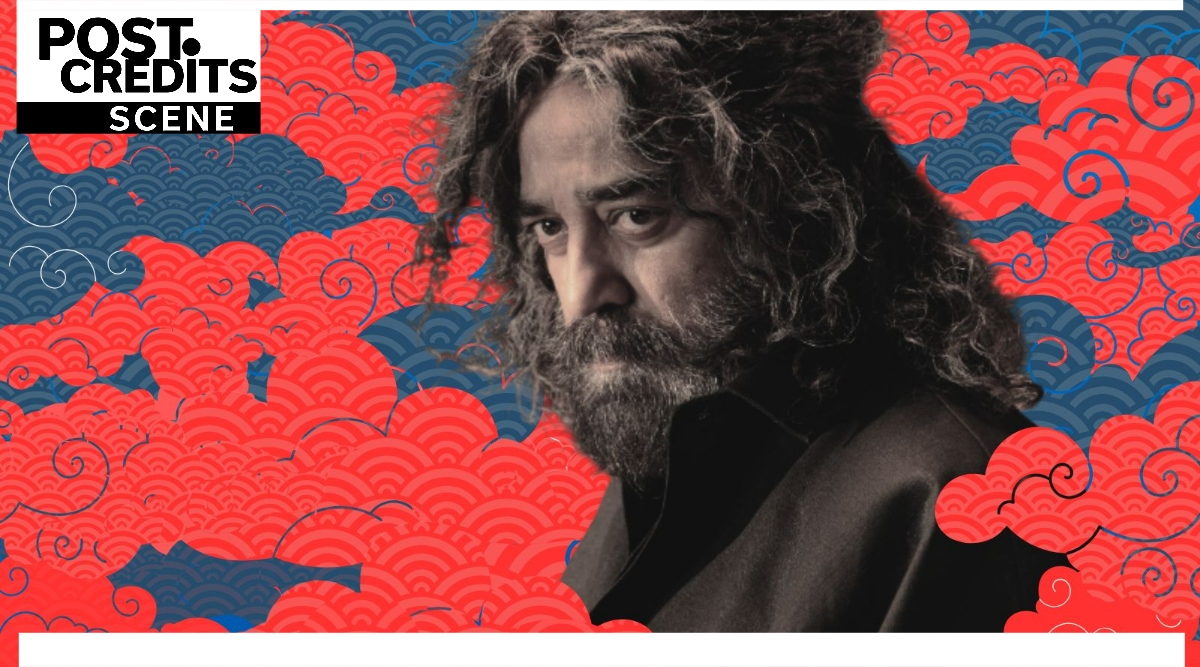A regular reappraisal of old masters should be made standard practice in all art. Just because someone made a good movie once doesn’t mean that they should be given immunity from bad reviews for the rest of their lives. Sure, making Piku and October and Gulabo Sitabo and Sardar Udham (in a row!) allows you one I Want to Talk, but that’s all. It is only when certain sacred cows are nudged out of (self) harm’s way that they can introspect. Had somebody somebody pointed out the obvious to Sanjay Leela Bhansali years ago, we wouldn’t have had to endure Heeramandi. Had someone criticised Nayakan for what it is — a blatant act of plagiarism — we wouldn’t have had to witness director Mani Ratnam and star Kamal Haasan doing it all over again in Thug Life.
The gangster drama was released on Netflix merely four weeks after it flopped in theaters. Thug Life debuted to intense scrutiny, seeing as it marked the filmmaker and actor’s first collaboration in nearly four decades. During those years, the two rose to the pinnacle of Indian cinema, having earned not just a reputation for making hits, but also a certain respect that eludes most of their colleagues. Mani Ratnam is the thinking man’s blockbuster director; Kamal Haasan is the thinking man’s movie star. And yet, the best that they could come up with is yet another tired reimagining of Francis Ford Coppola’s The Godfather, injected with a toxic dose of Prashanth Neel.
You’d think that Ram Gopal Varma was the Indian filmmaker most in need of an intervention for the Godfather obsession; he can narrate Sonny Corleone’s introduction in the book from memory. But no, Ramu is doing just fine in his corner. It’s Ratnam that needs a talking to. Thug Life takes several plot beats from The Godfather trilogy, misunderstands their meaning, and presents to us a pulverised version that retains neither the humanity of the original nor the fresh perspective of a remake. More egregiously, the movie aims for a similar poignancy in its climax, but makes the baffling choice to kill the wrong character.

Thug Life features Kamal Haasan as Sakhtivel, a hardened mob boss who operates out of New Delhi. His greatest rival is played by Mahesh Manjrekar. Sakhtivel communicates with his troops in Tamil, which leads you to assume that he’s a migrant. Manjrekar’s character, on the other hand, is supposed to be a Delhi-based don. What criminally poor casting. Chances are, if you were to google the words ‘Marathi manus’ right at this moment, a picture of Mahesh Manjrekar would pop up within the first scroll. Could they have found a less appropriate actor to play an NCR gangster? Probably not. But this is among Thug Life’s least annoying missteps. Remember, this is the film for which two-time Academy Award winner AR Rahman composed the song “Sugar Baby.”
In Thug Life, Sakhtivel is ambushed by his rival, leaving him battling for his life. He suspects his adopted son of having sold him out. This man, Amaran, is like a combination of Tom Hagen and Paulie, at least for this one section of the film. Later, he becomes a sort of stand-in for Michael Corleone, and even Andy Garcia’s character from the third Godfather movie. Ratnam is an equal opportunity pillager here. Meanwhile the woman that Sakhtivel cheats on his wife with — she’s played by Trisha Krishnan — dies in a blast orchestrated by the villains. His good-for-nothing brother, played by Nassar, is banished to oversee his casino business, like Fredo. Ratnam even finds an excuse for an extended wedding scene, where Sanya Malhotra shows up to shake a leg like Johnny Fontaine; except, her entire track seems to have been cut.
Thug Life builds towards a grand clash in the climax, where Sakthivel seemingly returns from the dead to battle his protege. As Darth Vader says to Obi-Wan Kenobi at the end of Star Wars, “When I left you, I was but the learner. Now I am the master.” In a sense, Thug Life follows the same model, adhering to tropes that have been rehashed innumerable times over the decades. There’s only one logical conclusion to this saga: The ageing Sakthivel must clear his name and convince Amaran that he truly didn’t wish him any harm; Amaran must recognise the mistake he made in challenging his guru, and he must live with the eternal guilt of killing him in combat. The cycle of violence continues; Amaran lives on, haunted, while Sakthivel is redeemed for all the sins he has committed over the years. It would’ve been the most obvious ending, but effective, nonetheless.
Story continues below this ad
Except, Ratnam and Haasan choose to kill Amaran instead, and not even by Sakthivel’s hand. Ali Fazal’s character pops out of nowhere and shoots him dead. Nobody cares about this guy; why was he given this responsibility at all? It sucks the air out of an already deflated movie. Sakthivel survives, and seemingly retires from a life of crime. Since he wasn’t the one who was forced to kill his adopted son, he suffers no guilt. He just… exists. If anything, he seems to miss murder and mayhem. At least, this is what the movie seems to imply when it has Sakhtivel slip on his gangster glasses in the middle of a field. There’s is no discernible reason for Amaran to have been killed in his place, unless you count causing trauma to his long-lost sister as probable cause. It’s a truly puzzling creative choice that feels completely at home in a truly puzzling film.

But the Indian film industry is a funny place. Only in our country can a movie like Nayakan be considered one of the GOATs. It should ideally be disqualified from any such discussion on plagiarism grounds alone. Forget being sued, or worse, shunned — plagiarism is the worst crime that a creative person can commit — Ratnam and Haasan have spent the last three-and-a-half decades basking in that film’s success. This is the only reason why they’ve felt empowered to pull the same trick again. And while Thug Life has been criticised for several reasons, its kleptomania has seemingly been forgiven. Is this because of Indian cinema’s long history of taking ‘inspiration’ from international films? Has this practice been so normalised that it doesn’t even raise an eyebrow anymore?
Also read – MobLand review: Tom Hardy grunts his way through Guy Ritchie’s soapy homage to The Godfather
It’s worth investigating, isn’t it? Because there’s only a fine line separating thievery from tribute. Ramu made Sarkar, but his brash acknowledgement of its unoriginality shouldn’t excuse him from a rap on the knuckles. Some years ago, Mahesh Narayanan directed Malik, the rare Indian Godfather rip-off that stands on its own two feet. It aped the original not in plot, but in tone and texture. And that’s really the best way that a filmmaker can respectfully honour a movie they love. The reason why Thug Life doesn’t have even a fraction of The Godfather’s emotional heft, even though it’s so indebted to that film, is because it is clueless about one hard fact: The Godfather isn’t a gangster movie, it’s a family tragedy. By allowing Sakhtivel to survive, the movie is shamelessly holding out out hope for a sequel, and, in doing so, disrespecting the story it’s telling.
Story continues below this ad
Post Credits Scene is a column in which we dissect new releases every week, with particular focus on context, craft, and characters. Because there’s always something to fixate about once the dust has settled.

























